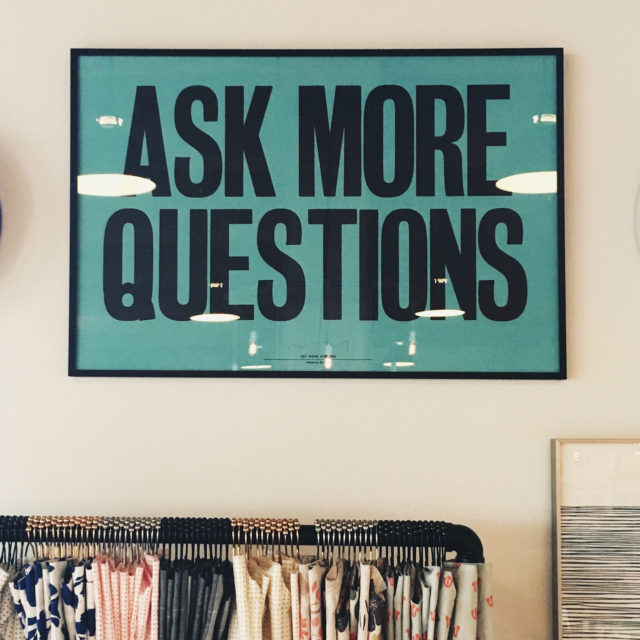We live in a super-charged world today. It’s one in which your customer will let you know immediately if they are unhappy with your product or service because they’ll share it on social media or write you a bad Google review.
But, what about all of your happy customers? Or, the customers who might benefit from your product, but aren’t sure how to use it?
In this article, we look at eight excellent ways to track customer satisfaction so you not only learn when customers are unhappy, but you learn what they like and how you can improve.
If you want to stay on top of the competition, you want to actively track customer satisfaction every day.
#1: Customer Feedback Surveys
Perhaps the easiest way of all to track customer satisfaction is through the online survey.
Create a succinct, three-five question survey to send to your customers. Don’t ask leading, loaded or biased questions and include an open-ended question or two as well.
Decide what results you’re looking for when crafting the survey. Only ask the questions that are actionable. In other words, don’t ask questions if you don’t intend to take an action on the answer.
Online customer feedback surveys work, and they’re a terrific way to track customer satisfaction.
#2: Email
Tracking customer satisfaction through email is a valuable way to monitor your customer satisfaction rates.
When sending email, be personal and to the point. Don’t ask too much and use open-ended questions to elicit a response.
Always follow up if the customer is unhappy.
One of the best times to solicit feedback is right after your customer signs up to join your email list.
You can then send an automated email asking a single question. Here are some ideas:
- What are you struggling with (in regards to your products/services)?
- What feature would you like us to add?
- Why did you join our list?
- How can we make your life easier?
You can use email to send out your online surveys as well.
#3: Usability Tests
Usability tests are terrific because you have a captive audience trying out your product or service. They are dedicated to giving your test their all, and they are willing to be serious about providing feedback.
Just imagine that you developed a new iPhone accessory, and you give it to 50 people to try for a month.
You ask them to record their observations every day for the whole 30 days. You ask them what they like, what they don’t like and what they don’t understand.
After the 30 days are up, your trial users can give you a wealth of information about your product.
By tracking customer satisfaction through usability tests, you’re better able to anticipate further satisfaction when you launch your product.
#4: Customer Conversation
Another excellent way to track customer satisfaction is with the direct interview – one-on-one and person-to-person.
Understanding your customers and their wants and needs is done easily when it’s done face-to-face.
When you conduct personal interviews in conjunction with your electronic customer surveys, you’ll end up with a wealth of information.
Focus on your customers’ attitudes towards your product or service. Be specific and ask open-ended questions. You aren’t after a yes or no answer here.
Ask your customers about their usage habits. For example, how often do they use your product/service, in what instance and for how long. Uncover if there are other products they use as well.
If you want to really understand your customer and dive deeper into the level of their customer satisfaction, interview them in person. (tweet this)
#5: Website Feedback Boxes
You can track customer satisfaction through feedback boxes on your website or with one question website surveys.
Grab your customers while you are top of mind. For example, if you want to know what they thought of your checkout process, put a feedback box on your shopping cart page.
Offering customers a quick chance to let you know how they feel is a great way to catch minor problems before they get broadcast all over social media.
#6: Social Media
Monitoring social media is an untapped arena for many businesses, but one you should be using.
Social media is a wide open world where you have the ability to create a huge impact on your customer base. This is where you do your heavy relationship building.
Social media is also where you’ll learn if people are happy or unhappy with your service.
In fact, the amount of customer feedback on social media is unprecedented. Never before have people been able to express their opinions so vocally.
Be sure to monitor your social media conversations and attend to comments immediately, especially if they’re negative.
To help you track your customer satisfaction on social media, you can use the following tools:
- Google Alerts – set these, and for free Google notifies you when your brand has been mentioned online.
- Mention – this tool also lets you know when your business gets mentioned online. It works much better for social media monitoring. (This tool is not free.)
- Socialmention – this free tool analyzes your social mentions and shows your range of influence, your ratio of positive to negative mentions and much more.
#7: Website Analytics
Some businesses neglect their Google Analytics, which is unfortunate because it’s a treasure trove of information.
By checking your analytics, you can glean what part of your website gets the most traffic, when and how often. You can also get a good look at user behavior while visitors are on your website.
Using your analytics is a passive way to track customer satisfaction as it doesn’t directly involve their input, but it’s still a good way to gauge customer traffic on your website.
Through your analytics, you’ll find areas of your site that need improvement, and you can learn how to better guide website visitors through your sales funnel.
#8: Focus Groups
Finally, one last way to track customer satisfaction is through focus groups. These are an excellent and relaxed way to talk to your customers.
Getting a group of people together encourages interaction and discussion. They might even provide some ideas for moving forward.
To Conclude
Now that you have eight excellent ways to track customer satisfaction, it’s time to get to work. Once you’ve picked a couple strategies for learning more about your customers, put someone in charge and set the ball rolling.
When you’ve completed your customer satisfaction surveys, tally your data, and then take action.
Let your customers know what you learned and what you’re going to do about it. This lets them know you value not only their input, but their time.
Surveys help you make the best decisions for your business. Are you ready to get started with your free Survey Town trial? Start with your free account today, and you can upgrade at any time.
Image: Binit Sharma









